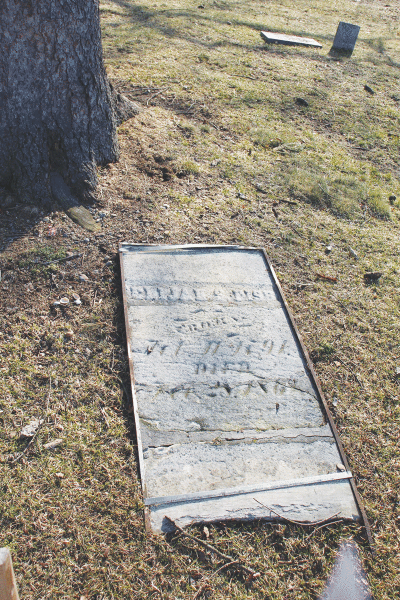
The gravesite of Elijah Fish is located in Greenwood Cemetery and will be formally acknowledged as part of the National Park Service’s Underground Railroad Network to Freedom at an event Sept. 17.
Photo provided by city of Birmingham
BIRMINGHAM — The Birmingham community will come together Sept. 17 for an Underground Railroad Commemoration Ceremony.
This event will formally acknowledge the Greenwood Cemetery gravesites of Elijah Fish and George Taylor and their recent recognition on the National Park Service’s Underground Railroad Network to Freedom.
Through a long process of research by staff and volunteers of the Birmingham Museum, information about Fish and Taylor was uncovered from documents such as obituaries and newspaper notices.
Fish was an abolitionist and came to Birmingham to buy property around 1820. He was involved with the Underground Railroad, helping people to cross Michigan and enter Canada in order to purchase land and become self-sufficient.
Taylor fled enslavement and eventually settled in Birmingham. He is thought to be Birmingham’s first African American property owner.
A program will take place at 11 a.m. at Quarton Lake Park, on the corner of Oak Avenue and Lakeside Drive. The program will be followed by a tour of the Greenwood Cemetery gravesites. This program and tour will be free to the public.
“I think by people attending the commemoration, it shows support for these men and for their extraordinary lives,” Birmingham Communications Director Marianne Gamboa said.
There will be several speakers at the event, including Mayor Therese Longe and Museum Board Chair Marty Logue.
Other special guests will be the president of the Seaholm High School Black Student Union and researcher George Getschman, Jacquie Patt and Donna Casaceli.
George Taylor descendants will be flying in from all over the country for the ceremony.
“I think it certainly makes it even more special and it just signifies just how important this designation is,” Gamboa said. “The fact that somebody would fly across the country for it, I think it’s a real tribute and an honor to him that they are making the effort to be there, and we hope that the family appreciates and understands just how supportive we are and how important their contribution is.”
Birmingham Museum Director Leslie Pielack explained how these recent findings have brought to light the abolitionist movement in Michigan and provided local stories that relate back to the Underground Railroad.
“This is a standout event in Birmingham’s history,” Pielack said. “It’s really linking the events from about 175 years ago, or thereabouts, with what’s going on today.”
Pielack said that since the story of Taylor is on the freedom-seeker side and the story of Fish is on the abolitionist side, Birmingham is able to more easily tell the full story.
“There’s a lot of excitement on the part of all of our volunteer researchers and our museum staff, including me, about finding ways to get this evidence-based information out to the public.”
Pielack acknowledged the tenacity and hard work of the museum’s volunteer researchers.
“Usually they are the most humble part of the team, but the volunteer researchers on this project really are the reason it’s happening,” Pielack said.
More information for this event can be found at bhamgov.org.
 Publication select ▼
Publication select ▼






















